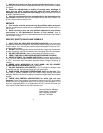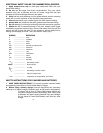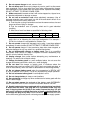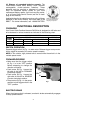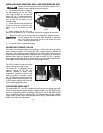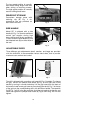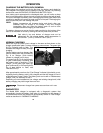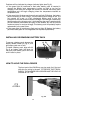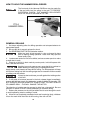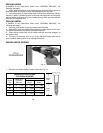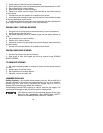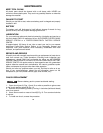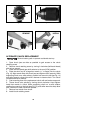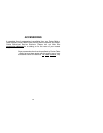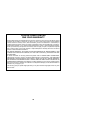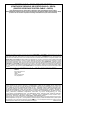
13
DRILLING WOOD
In addition to the instructions listed under "GENERAL DRlLLlNG", the
following also apply:
1. When using twist drills in wood, withdraw them from the hole frequently to
clear chips built up in flutes to avoid overheating and burning work.
2. If a backing block is used to keep back of work from splintering, clamp it
securely in place. If a backing block is not used with spade bits or hole saws,
ease up pressure as soon as bit point breaks through work, and complete the
hole from the opposite side.
DRILLING METAL
In addition to the instructions listed under "GENERAL DRlLLlNG", the
following also apply:
1. Use only good quality sharp high speed steel twist bits.
2. Start drilling with slow speed and gradually increase speed as drill cuts.
The harder the material, the slower the speed required.
3. When drilling a large hole, drill a smaller hole first and then enlarge it to
the required size.
4. The use of a lubricant, such as oil, on the drill point helps keep the bit
cool, increases drilling action, and prolongs drill bit life.
DRIVING WOOD SCREWS
1. Drill pilot and shank clearance holes. See chart Fig. 12.
IT’S A
SCREWDRIVER
Fig. 11
Fig. 12
↑
Shank
Drill
↓
SUGGESTED HOLE SIZES
FOR WOOD SCREWS
Shank Drill
Pilot Drill Diameter
Screw Clearance Soft Hard
Size Diameter Wood Wood
#6
9
/64 (.140)
1
/16 (.062)
7
/64 (.109)
#8
11
/64 (.172)
5
/64 (.078)
1
/8 (.125)
#10
3
/16 (.187)
3
/32 (.094)
9
/64 (.140)
#12
7
/32 (.218)
7
/64 (.109)
5
/32 (.156)
↑
Pilot
Drill
↓



